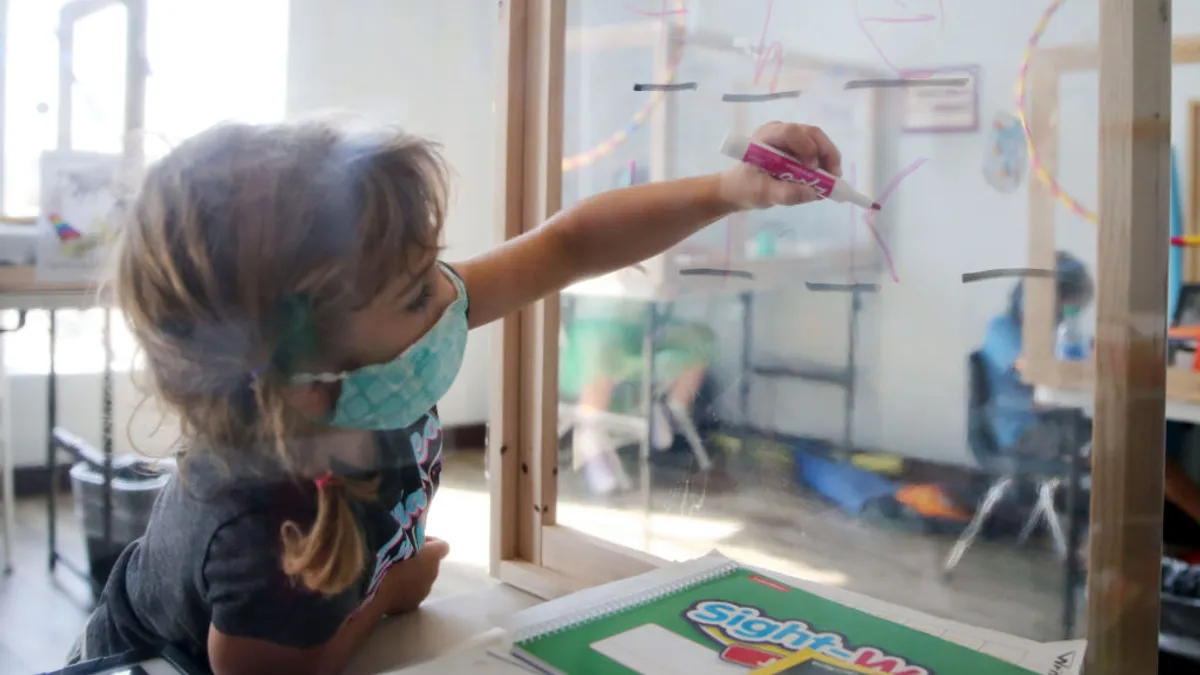From helping parents develop bedtime routines for students to scrutinizing attendance data, two school leaders shared during a Tuesday webinar how they took proactive approaches that are leading to improved student attendance.
The webinar was hosted by Attendance Works, the American Federation of School Administrators, the National Association of Secondary School Principals and the National Association of Elementary School Principals.
Victoria Simon, principal of Aberdeen Academy, a pre-K-8 school in Grand Rapids, Michigan, and Ryan Broderick, assistant principal of Bristol Central High School in Bristol, Connecticut, said there have been notable improvements despite their schools' attendance rates still being in pandemic recovery mode.
That progress, they said, is mostly thanks to a focus on strengthening relationships with families and students through a variety of activities, a willingness to experiment, finding the best procedures to organize attendance data, collaborating with partners, and seeking out resources from organizations like Attendance Works.
Here are some of the takeaways shared by Simon and Broderick:
Aberdeen Academy
Aberdeen Academy, which serves 250 students, lowered its severe chronic absenteeism rate from 15% in 2021-22 to 9% so far in 2023-24. Severe chronic absence is when a student misses 20% or more of the school year. The school also increased its satisfactory attendance rate (missing less than 5% of school) from 23% in 2021-22 to 37% this school year.
To improve attendance rates, the school began addressing students' individual needs by monitoring absence data, determining attendance barriers and seeking solutions to fit each student's needs.
Illnesses continue to be substantial reasons students stay home, Simon said. Of course, if students have the flu, the school wants them to recover at home before returning. But generally, school leaders have consistent messaging that students are expected to attend school and should strive to have less than 5 absences per school year, Simon said.
That messaging to parents includes, "This is your child's future, and I know how much you love your kids and how important it is for their success. They're not going to be able to read and succeed if they're not in school," Simon said.
To support its attendance goals, the school uses a multi-tiered systems of support that increases the intensity of interventions for students most in need.
At the universal student level, Simon and other school staff make sure to greet each student at the beginning of the day. "Students want to know that we see them," she said. The school also recognizes classes that have the best weekly attendance.
For students who are moderately or severely chronically absent, the school provides individualized outreach through a family support coordinator who determines why students are absent.
The coordinator hosts an attendance club for students at risk of lower attendance. Club members who have good school attendance during the week receive prizes, and the coordinator attempts to find out why students with lower attendance missed school, Simon said.
Much of improving attendance is listening to families' concerns, Simon said. For example, the school has had discussions with parents concerned about school safety, where school staff explain the safety measures in place.
For some other families, the school has helped create individualized bedtime and morning routines to ensure students are ready for the school day.
"We're trying to establish those habits now with the students, so they're on a path to success," Simon said.
Bristol Central High School
The 1,220-student school had a chronic absenteeism rate of 30.9% during the 2020-21 school year, and that improved to 21.6% this school year, said Broderick. The school defines chronic absenteeism as missing more than 10% of the school year, or 18 days over a 180-day school year.
While the rate of chronic absenteeism has lowered over time, there are still 230-250 students who are chronically absent, Broderick said.
"We have to remain driven and motivated to make sure that we are putting the proper interventions in place for students who are struggling to get here as often as we would like to see them," Broderick said.
Broderick said barriers to attendance are varied. Some students just don't want to come to school. In other cases, the 7:30 a.m. school start time has been difficult for students who stay up late into the night scrolling on their phones. There are also illnesses or jobs that require teens to leave school early, he said.
Like Aberdeen, Bristol Central uses an MTSS approach that starts with "making sure every kid feels connected and safe," Broderick said. "Our goal is to know every student by name, strength, need and story."
To target the students at risk of chronic absenteeism, the school has honed its data analysis to identify who is missing school and track which interventions each student has received. School staff also works with students and families on attendance goal-setting, makes home visits, and conducts other targeted interventions.
Like Aberdeen, Bristol rewards students for good attendance. "We're swagging the heck out of these kids — T-shirts, bags, all sorts of fun things," Broderick said.
And Bristol Central has also helped students and their families create bedtime routines to support attendance.
"I come from the perspective that all parents want their students to be successful, and that is an absolute common ground that we have with families," Broderick said.








 Dive Awards
Dive Awards














